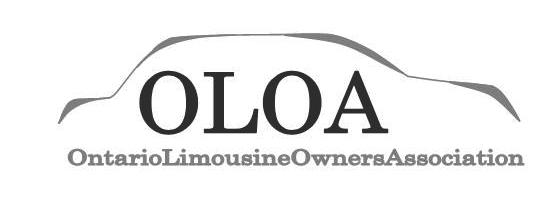
Relapse provides an opportunity to learn and strengthen one’s approach to recovery, not a reason to give up. Contrary to stereotypes, addiction impacts people of all ages, genders, socioeconomic statuses, and education levels. No one is immune, and factors like genetics, environment, and trauma can increase vulnerability.
Myth 5: Relapse Means Failure
Commonly abused prescription drugs include ADHD medications, narcotic pain medications and drugs intended to treat anxiety. Unfortunately, abuse of these drugs can be deadly, with nearlyfive young adults dyingeach day from prescription drug overdose. Prescription medications have the potential to be as addictive and deadly as illicit drugs.
Myth #4: It Doesn’t Count as Treatment if I Need Medication
The addict can lose the ability to derive pleasure from everyday activities, which makes suffering constant and incessant. If you are concerned about yourself or someone you love, reach out. Whether you are letting people know for the first time or addressing someone that has a problem, it needs to start somewhere. It will be uncomfortable but the momentary discomfort does not compare to the grave dangers of prolonged addiction. But it would myths about addiction be naive to say it is as easy as just recognizing the problem—and then putting a stop to it by seeking treatment.

Myth: If you can live with your addiction, you can live without treatment.
Osteoporosis is characterized by weakened bones, making them more susceptible to fractures. It is essential for both men and women to prioritize bone health as they age. Adequate calcium and vitamin D intake, regular weight-bearing exercises, and avoidance of tobacco and excessive alcohol consumption are key preventive measures.

- We will also explore the harmful effects of prescription drugs, debunk stereotypes surrounding addiction and physical appearance, and shed light on the seriousness of alcoholism.
- Inpatient programs are typically the most expensive, costing anywhere from $5,000 to $80,000.
- They provide a safe and non-judgmental space for open conversations.
- However, many people have a false notion of what addiction treatment is like, due to factors like social stigma, shame, or misinformation.
- It’s not just about willpower; it’s about genes, environment, trauma, and mental health.
The information we provide is not intended to be a substitute for professional medical advice, diagnosis or treatment. It should not be used in place of the advice of your physician or other qualified healthcare providers. Misconceptions about addiction medication, also known as Medication-Assisted Treatment (MAT), can hinder understanding and hinder individuals from seeking effective treatment. Let’s debunk some common myths surrounding addiction medication. Embark on a transformative journey towards recovery as we delve into the various aspects of overcoming addiction and reclaiming a fulfilling life.

But you can lessen the chances of harmful effects if you use smaller amounts of meth no matter what method you choose. Find rehab for yourself or a loved one by speaking with a treatment provider. Regardless of what you struggle with, alcoholism how bad your situation is, where you live or how much money you make, there is a treatment option available for you. Contact a treatment provider today and take your first step towards a new life.

Additionally, alcohol withdrawal can be complicated by delirium tremens (DTs), a life-threatening condition marked by confusion, hallucinations, and seizures. Alcoholics are often dehydrated and have vitamin, nutritional, and electrolyte imbalances. Intense alcohol cravings can lead to leaving a treatment program against advice or early relapse. Medical supervision is often required during alcohol detox to manage the risks.
- Treatment stresses the significance of continuous support and follow-up services to keep relapse at bay and maintain sobriety.
- Raising awareness, reducing social stigma, encouraging compassionate dialogue, and creating supportive environments can help break down the myths and misconceptions, leading to better outcomes.
- Quitting most often necessitates the help of professionals and treatment programs.
- Again, because there is no cure, no statistics can accurately depict recovery.
- Even though the leading authorities on addiction agree that addiction is a chronic disease similar to heart disease, diabetes, and cancer, addicts are still treated as second-class citizens.
- We have identified many of the biological and environmental risk factors and are beginning to search for the genetic variations that contribute to the development and progression of the disorder.
- We need to spread accurate knowledge, so society can understand the nature of addiction and the struggles of those seeking recovery.
- Addiction happens to people across all demographics, from all walks of life, and no one is immune.
- Addiction isn’t a choice—it’s a chronic disease that affects how the brain works.
- This statistic refers only to those addicts who have completed their treatment programs successfully, and not everyone manages that.
Stereotyping based on physical features only reinforces stigmas, and prevents individuals from seeking help. So, it needs evidence-based treatments made for individual needs. When designing a relapse prevention plan, individual circumstances should be taken into account. Mental health, social support systems, and co-occurring disorders should all be considered. A holistic and individualized approach is needed to provide https://ecosoberhouse.com/ a more effective treatment. Treatment may not be able to cure addiction, yet it is an integral part in helping individuals reach wellness.
Once a person becomes dependent on drugs or alcohol, their brain adjusts to the excessive amount of chemicals entering their body. As their body’s tolerance for the drug grows, they need to use higher and stronger doses just to function normally. This vicious cycle is almost impossible to stop without effective medical treatment. Even though the leading authorities on addiction agree that addiction is a chronic disease similar to heart disease, diabetes, and cancer, addicts are still treated as second-class citizens. Many treatment centers believe confrontational, shame-based methods are necessary to motivate addicts.


